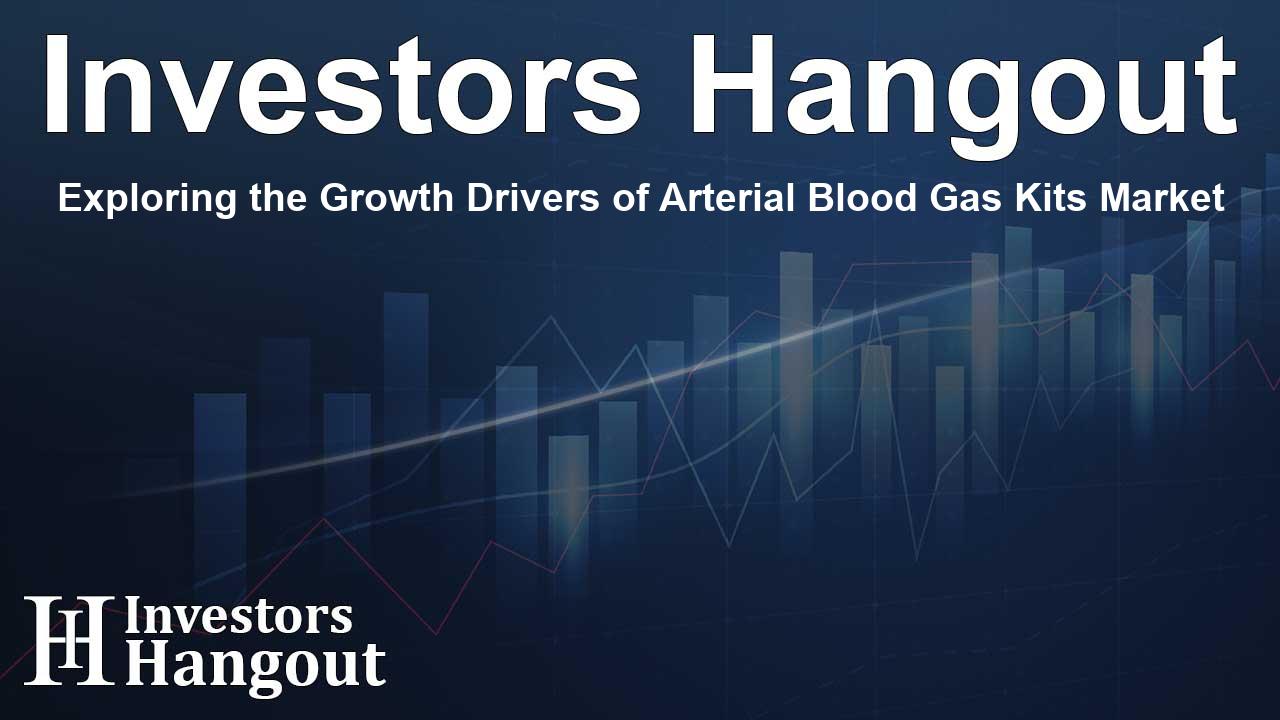Exploring the Growth Drivers of Arterial Blood Gas Kits Market

Understanding the Arterial Blood Gas Kits Market Dynamics
The global arterial blood gas kits market is experiencing impressive growth, projected to reach a value of $1.29 billion by a future date, significantly up from $710 million in a previous year. This evolution reflects a robust compound annual growth rate (CAGR) of 7.8%, indicating a vibrant market landscape.
Key Factors Supporting Market Growth
Several factors contribute to this noteworthy expansion:
- Increasing Prevalence of Respiratory Conditions: A rise in respiratory diseases like asthma, chronic obstructive pulmonary disease (COPD), and pneumonia creates a heightened demand for arterial blood gas (ABG) tests. These tests are crucial for monitoring oxygen and carbon dioxide levels in patients, making them vital for effective diagnosis and treatment of various respiratory ailments.
- Advancements in Technology: Innovative developments in ABG kits are reshaping the market. Modern devices are becoming more user-friendly and automated, equipped with monitoring features and error detection capabilities that enhance reliability and patient safety. Furthermore, the integration with electronic medical records (EMR) is improving clinical workflows and diagnostic accuracy.
- Shift Towards Point-of-Care Testing: The growing inclination towards point-of-care testing is fundamentally altering the diagnostic framework. This shift allows for immediate testing and results, significantly benefiting patient care in emergency departments and remote medical settings.
- Enhancements in Chronic Disease Management: With the increase in chronic respiratory diseases, the demand for frequent and accurate ABG testing is escalating. The market is witnessing a surge in portable and handheld ABG devices, making testing more accessible in critical and home-care environments.
Market Segmentation Insights
The arterial blood gas kits market is characterized by several key segments, providing a structured view of its vast landscape:
- Syringe Types: The market distinguishes between adult Luer slip and Luer lock syringes. The Luer lock segment commands a significant market share according to recent data.
- Type Segmentation: Devices are classified as vented or non-vented, with vented syringes leading in popularity.
- Usage Categories: The market differentiates usage into pre-set plunger and manual aspiration, where pre-set plunger kits are gaining preference.
- Applications: There are two primary applications: in vitro diagnostics and electrolyte analysis, with in vitro diagnostics emerging as the dominant niche, further divided into pH blood gas and oxygen content tests.
- Needle Gauge Specifications: Needle gauges vary between 23G, 23G to 25G, and greater than 25G, with the 23G to 25G segment holding substantial market share.
- Syringe Volumes: Categories include 1 ml and 3 ml, where the 3 ml volume segment is most prevalent.
- End Users: The market penetration is robust among hospitals and clinics, diagnostic laboratories, and others. Hospitals and clinics are at the forefront, utilizing these kits for comprehensive care.
Regional Market Trends
North America currently leads the market, propelled by high prevalence rates of respiratory diseases along with a well-established healthcare infrastructure. Conversely, the Asia Pacific region is anticipated to report the highest growth rate, driven by a surge in healthcare technology adoption and escalating disease burdens in countries such as India and China.
Conclusion: The Future of the Arterial Blood Gas Kits Market
The arterial blood gas kits market stands at a pivotal moment, buoyed by advancements in healthcare technologies and an increasing focus on chronic disease management. The emergence of devices that enhance portability and user experience places these kits at the center of effective patient care in various settings. As healthcare systems aim for swift and effective diagnostics, the relevance of arterial blood gas kits will likely continue to grow, promising excellent health outcomes for patients.
Frequently Asked Questions
What is the projected market size for arterial blood gas kits?
The arterial blood gas kits market is projected to reach $1.29 billion by a future year, reflecting significant growth from $710 million in a previous year.
What factors are driving the growth of this market?
Key drivers include the rising prevalence of respiratory diseases, technological advancements, and a shift towards point-of-care testing.
Which regions are expected to show the most growth?
North America currently leads the market, but the Asia Pacific region is anticipated to exhibit the highest growth rate due to increasing healthcare technology adoption.
What types of syringes are used in arterial blood gas kits?
Arterial blood gas kits utilize both Luer slip and Luer lock syringes, with the Luer lock type holding a larger share of the market.
How are arterial blood gas kits used in patient care?
These kits are vital for assessing a patient’s oxygen and carbon dioxide levels, facilitating timely diagnosis and treatment of respiratory conditions.
About The Author
Contact Addison Perry privately here. Or send an email with ATTN: Addison Perry as the subject to contact@investorshangout.com.
About Investors Hangout
Investors Hangout is a leading online stock forum for financial discussion and learning, offering a wide range of free tools and resources. It draws in traders of all levels, who exchange market knowledge, investigate trading tactics, and keep an eye on industry developments in real time. Featuring financial articles, stock message boards, quotes, charts, company profiles, and live news updates. Through cooperative learning and a wealth of informational resources, it helps users from novices creating their first portfolios to experts honing their techniques. Join Investors Hangout today: https://investorshangout.com/
The content of this article is based on factual, publicly available information and does not represent legal, financial, or investment advice. Investors Hangout does not offer financial advice, and the author is not a licensed financial advisor. Consult a qualified advisor before making any financial or investment decisions based on this article. This article should not be considered advice to purchase, sell, or hold any securities or other investments. If any of the material provided here is inaccurate, please contact us for corrections.
